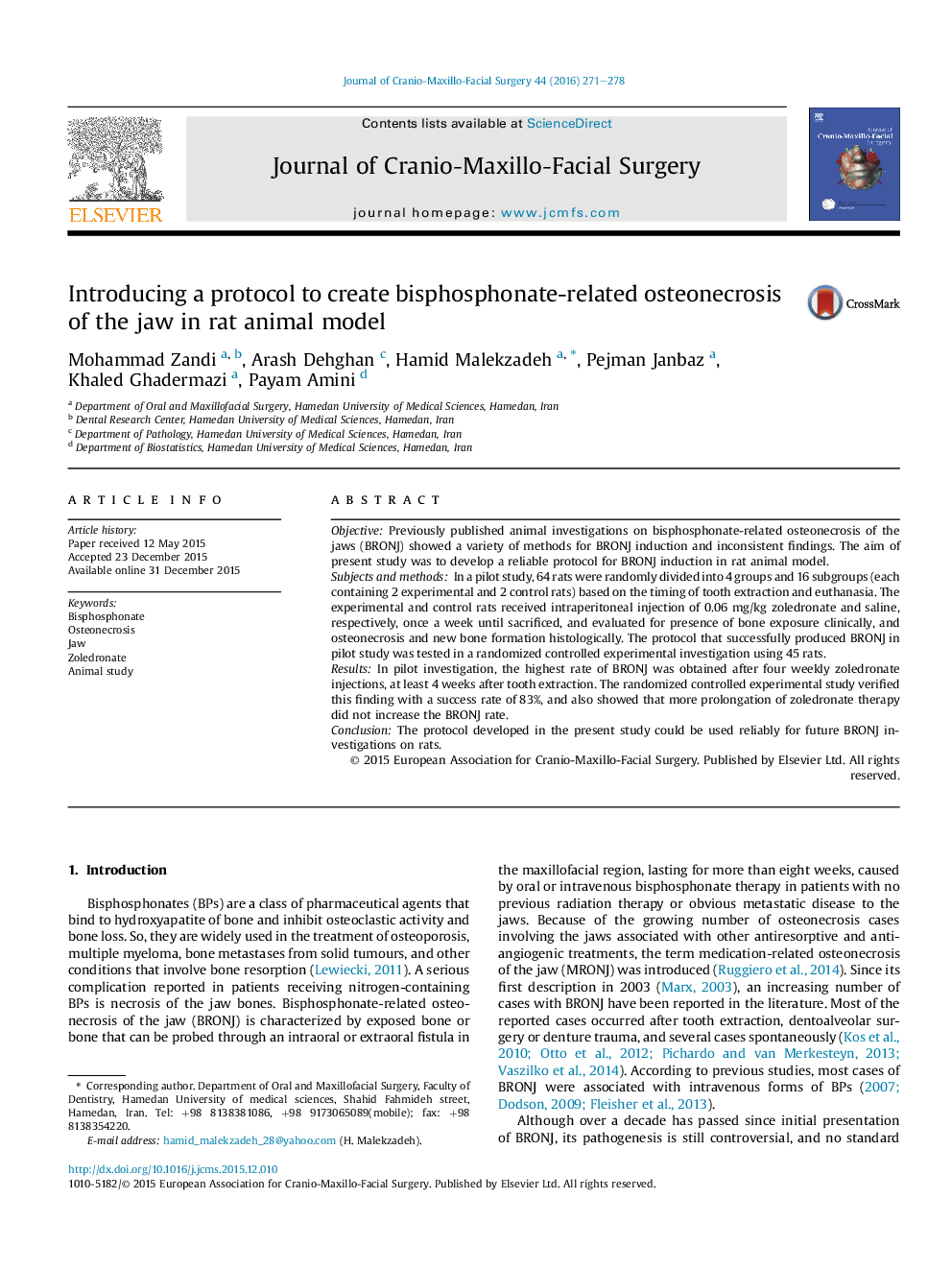| Article ID | Journal | Published Year | Pages | File Type |
|---|---|---|---|---|
| 3142081 | Journal of Cranio-Maxillofacial Surgery | 2016 | 8 Pages |
ObjectivePreviously published animal investigations on bisphosphonate-related osteonecrosis of the jaws (BRONJ) showed a variety of methods for BRONJ induction and inconsistent findings. The aim of present study was to develop a reliable protocol for BRONJ induction in rat animal model.Subjects and methodsIn a pilot study, 64 rats were randomly divided into 4 groups and 16 subgroups (each containing 2 experimental and 2 control rats) based on the timing of tooth extraction and euthanasia. The experimental and control rats received intraperitoneal injection of 0.06 mg/kg zoledronate and saline, respectively, once a week until sacrificed, and evaluated for presence of bone exposure clinically, and osteonecrosis and new bone formation histologically. The protocol that successfully produced BRONJ in pilot study was tested in a randomized controlled experimental investigation using 45 rats.ResultsIn pilot investigation, the highest rate of BRONJ was obtained after four weekly zoledronate injections, at least 4 weeks after tooth extraction. The randomized controlled experimental study verified this finding with a success rate of 83%, and also showed that more prolongation of zoledronate therapy did not increase the BRONJ rate.ConclusionThe protocol developed in the present study could be used reliably for future BRONJ investigations on rats.
